Affiliate links on Android Authority may earn us a commission. Learn more.
Google Pixel XL vs Samsung Galaxy S7 Edge
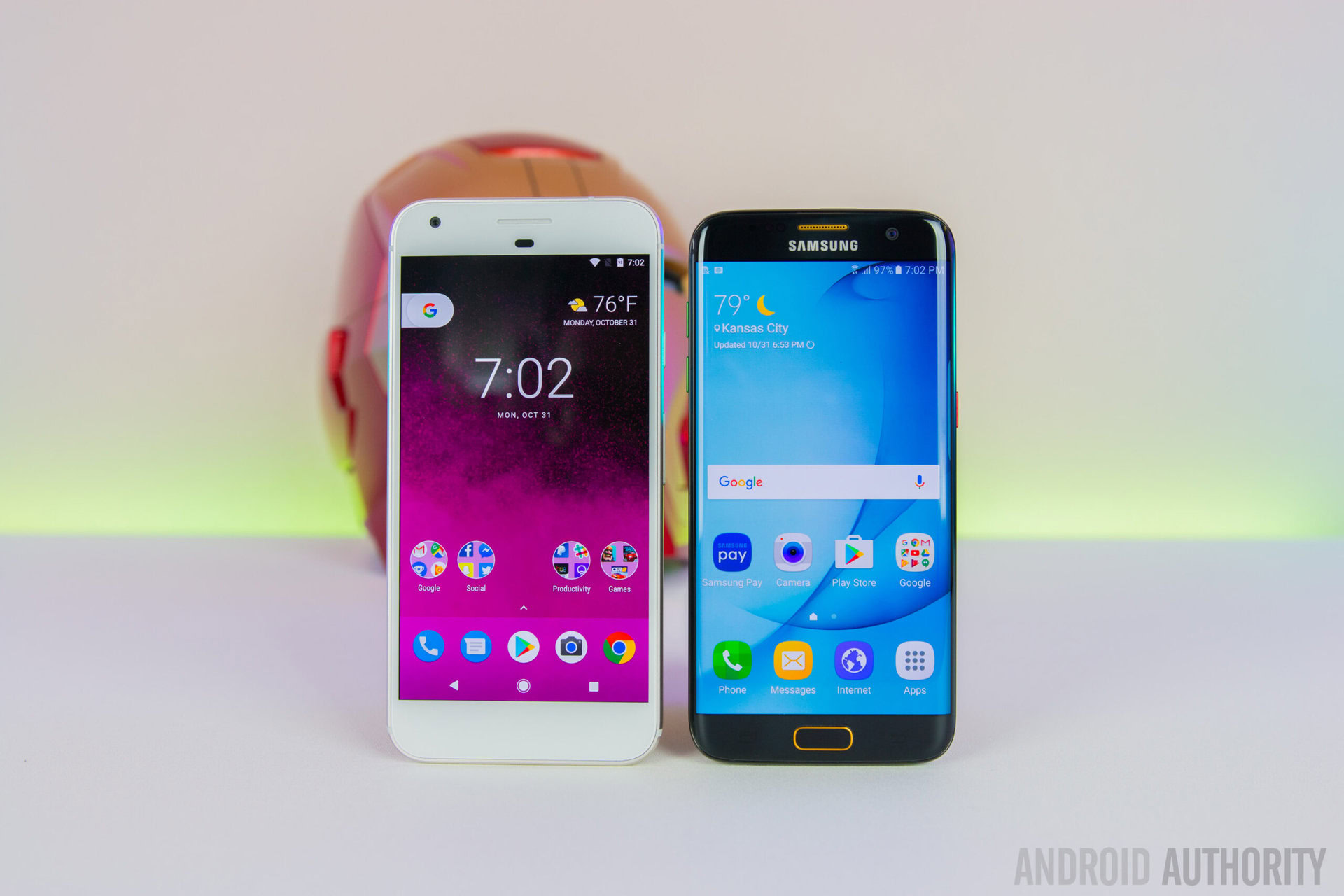
The Pixel XL and its smaller sibling are the first smartphones that have been built from the ground up with Google at the helm, which is one of the many reasons that these devices are a couple of the hottest smartphones that are currently available in the market. This is also the first phone that Google is very serious about selling to the masses, but it features a price tag that puts in direct competition with the Samsung Galaxy S7 Edge and iPhone 7 Plus.
Speaking of the Galaxy S7 Edge, it is now the de facto premier Samsung flagship with the Galaxy Note 7 no longer in the picture, and offers everything that consumers are looking for with their smartphone experience. How do these high-end devices compare, and which is the better choice? We find out, in this in-depth look at the Google Pixel XL vs Samsung Galaxy S7 Edge!
Design
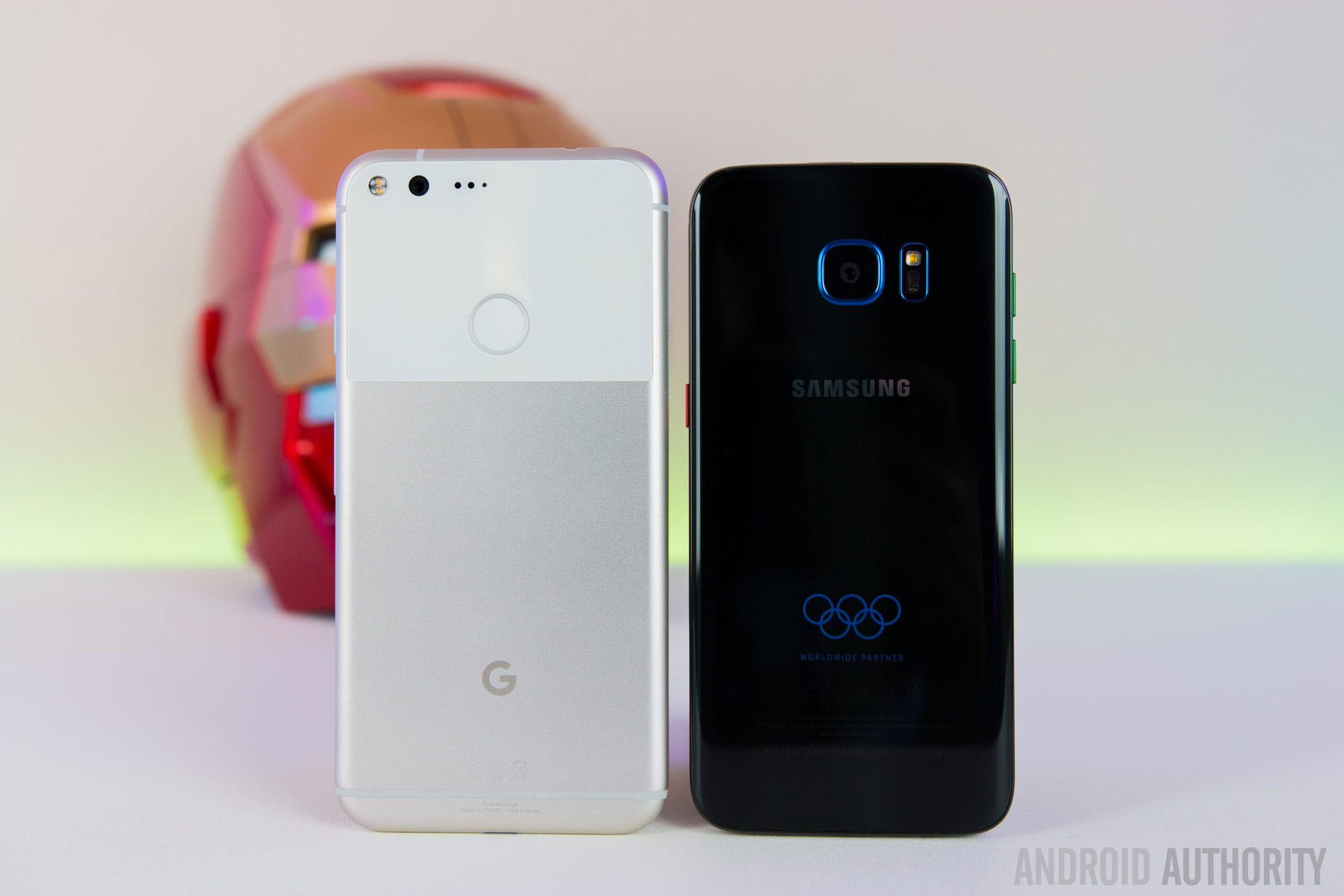
In terms of design, both smartphones may feature similar build materials, but they look and feel completely different. Starting with the Pixel XL, what you get is what appears to be a full metal unibody construction, with the exception of the glass window on the back. Not surprisingly, the build quality of the device is great, but there’s no denying that the Pixel looks a lot like the iPhone.
The design is rather generic when compared to Google’s previous Nexus smartphones, which always had a unique appeal to them. Much of the generic feel stems from the front and empty bottom chin, and if you didn’t already know that this was a Pixel XL, you’d be hard pressed to easily recognize it by just looking at the front.
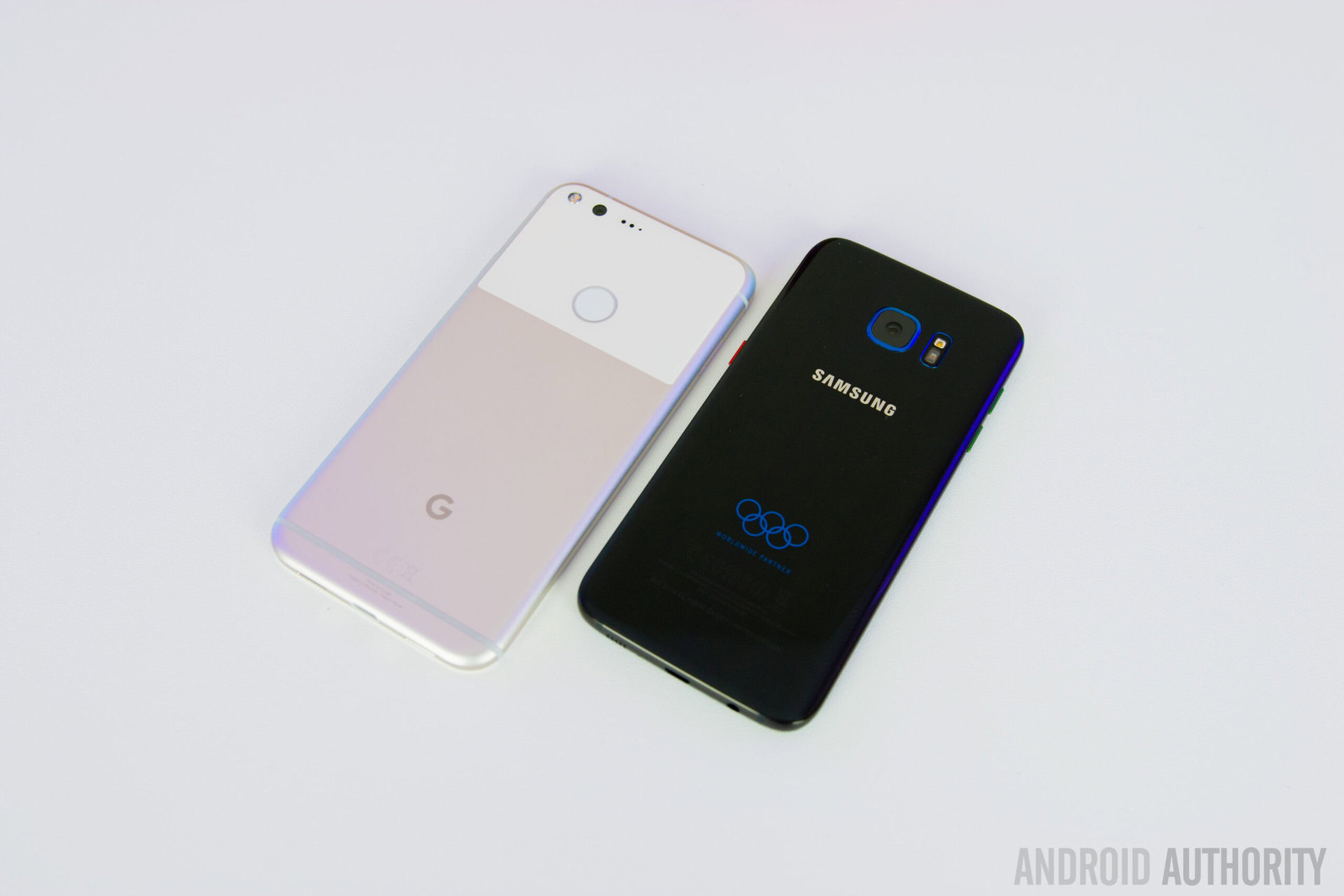
On the other hand, the Samsung Galaxy S7 Edge features a design that is a more flamboyant and eye catching. Ever since Samsung made the switch to a metal and glass build for their flagship smartphones just last year, they’ve done a great job at refining the design in a very short time.
With a smooth metal frame and curved glass on the front and back, the Galaxy S7 Edge is a very comfortable phone to hold and obviously looks fantastic. However, as is the case with any smartphone that is primarily built with glass, this device is a fingerprint magnet, and can be quite slippery as well.
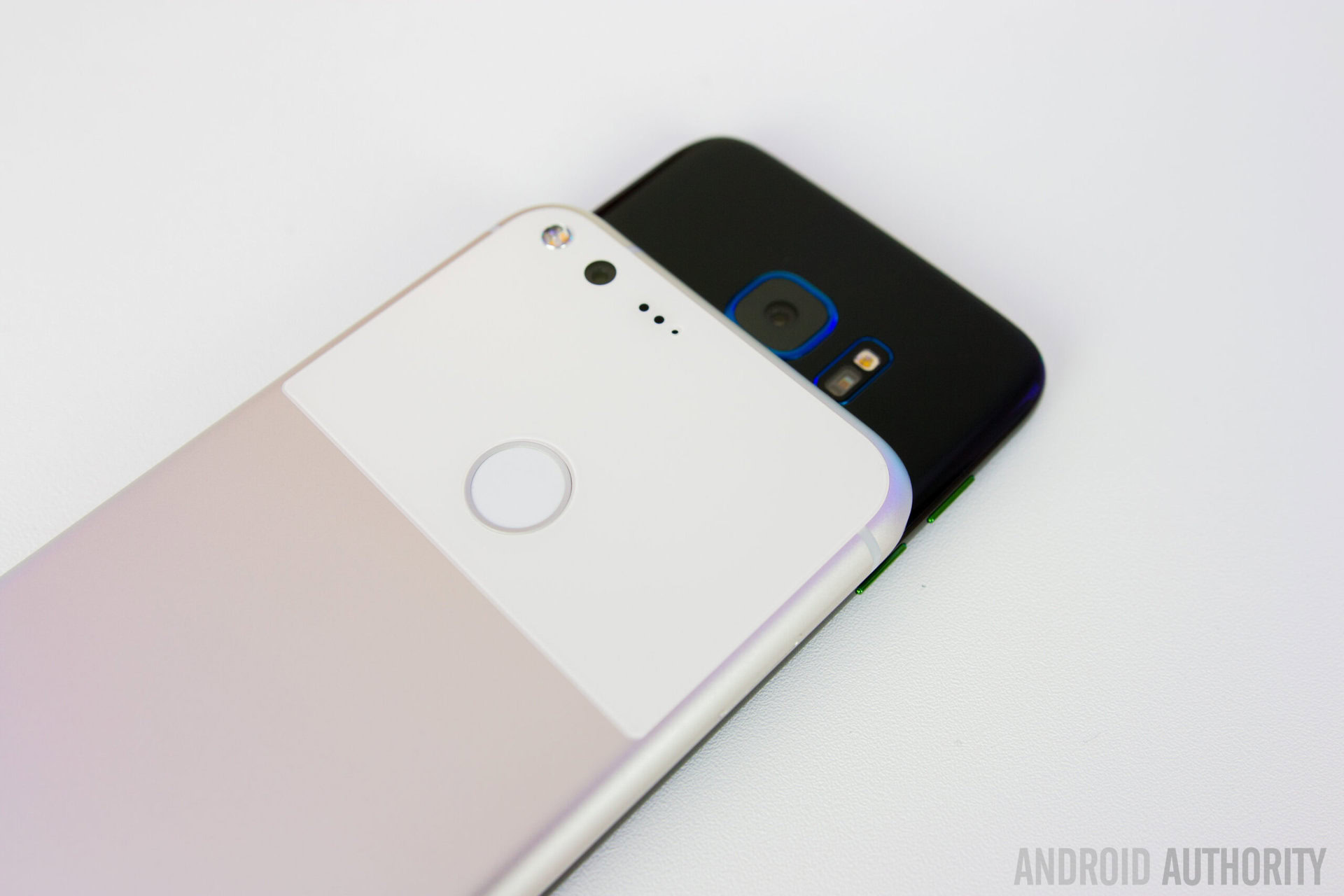
The Galaxy S7 Edge has been around for a while now, but the engineering that has gone into its design is still amazing to think about. Both the Galaxy S7 Edge and Pixel XL come with 5.5-inch displays, but the curved glass and smaller top and bottom chin makes the former shorter and narrower than the latter. This really makes a huge difference in how the two feel in the hand in terms of size.
Display

Both the Pixel XL and Galaxy S7 Edge come with 5.5-inch AMOLED displays, or Super AMOLED in the case of the Samsung flagship, with Quad HD resolutions. These are by far two of the best displays you can get on a smartphone right now and look absolutely gorgeous.
They are sharp and vibrant, and outdoor visibility is not an issue with either. Watching videos, playing games, and browsing the web are all an absolute joy on these screens, and because they are AMOLED displays, you are also getting those deep inky blacks, superb viewing angles, and high contrast ratios.
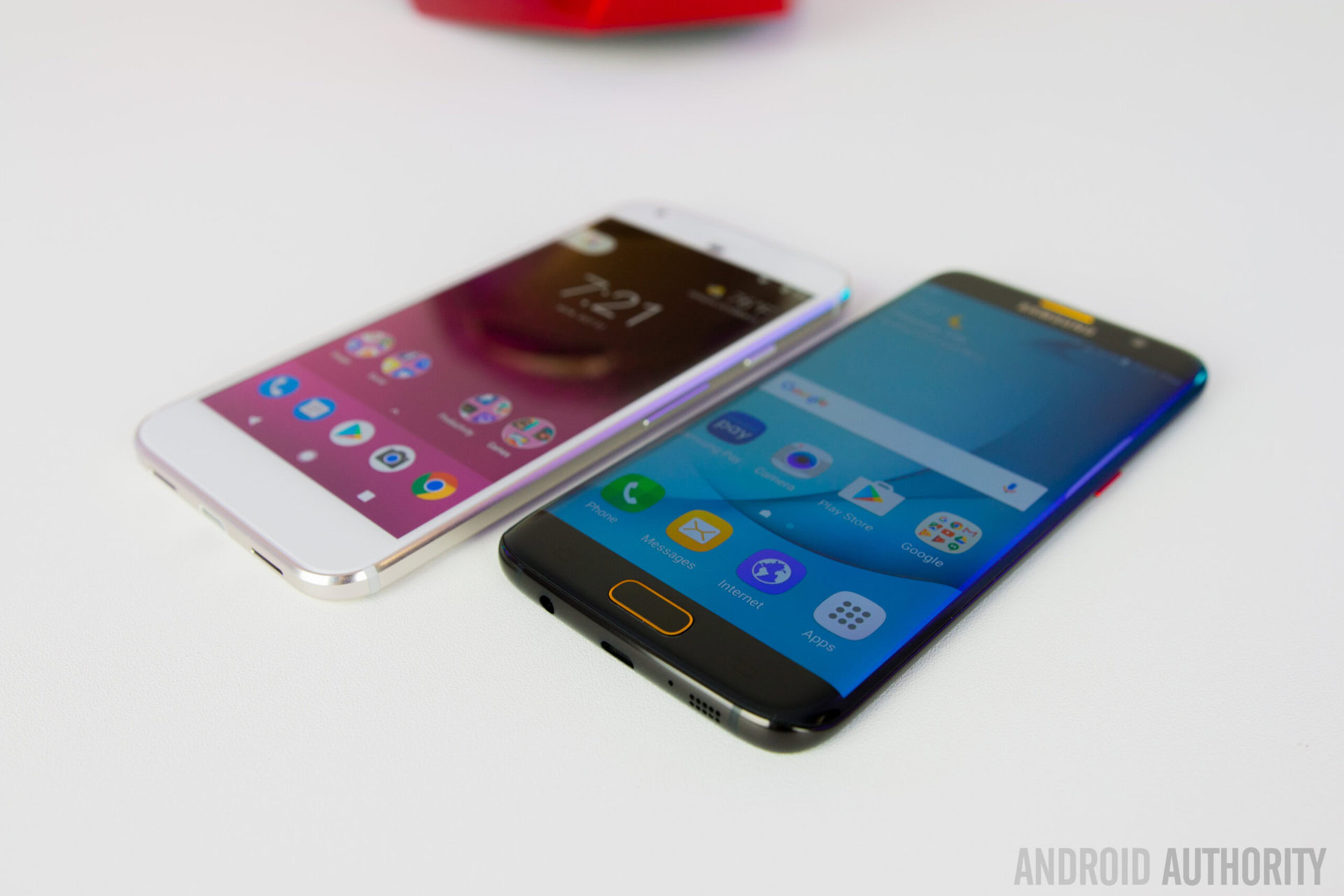
Of course, the big difference here is the flat screen of the Pixel XL and the curved display of the Galaxy S7 Edge, that not only let Samsung make their phone smaller, but also has some software benefits. A swipe inwards from the edge brings up the Edge panels, which includes shortcuts to a lot of useful things like apps, favorite contacts, the weather, sports scores, the news, and more.
Samsung also takes advantage of the AMOLED screen by introducing the Always On display feature, that can display a clock, calendar, and notifications. While the Pixel XL doesn’t have any such feature, you do at least get ambient notifications which will dimly wake the display whenever you receive a new notifications.
Performance
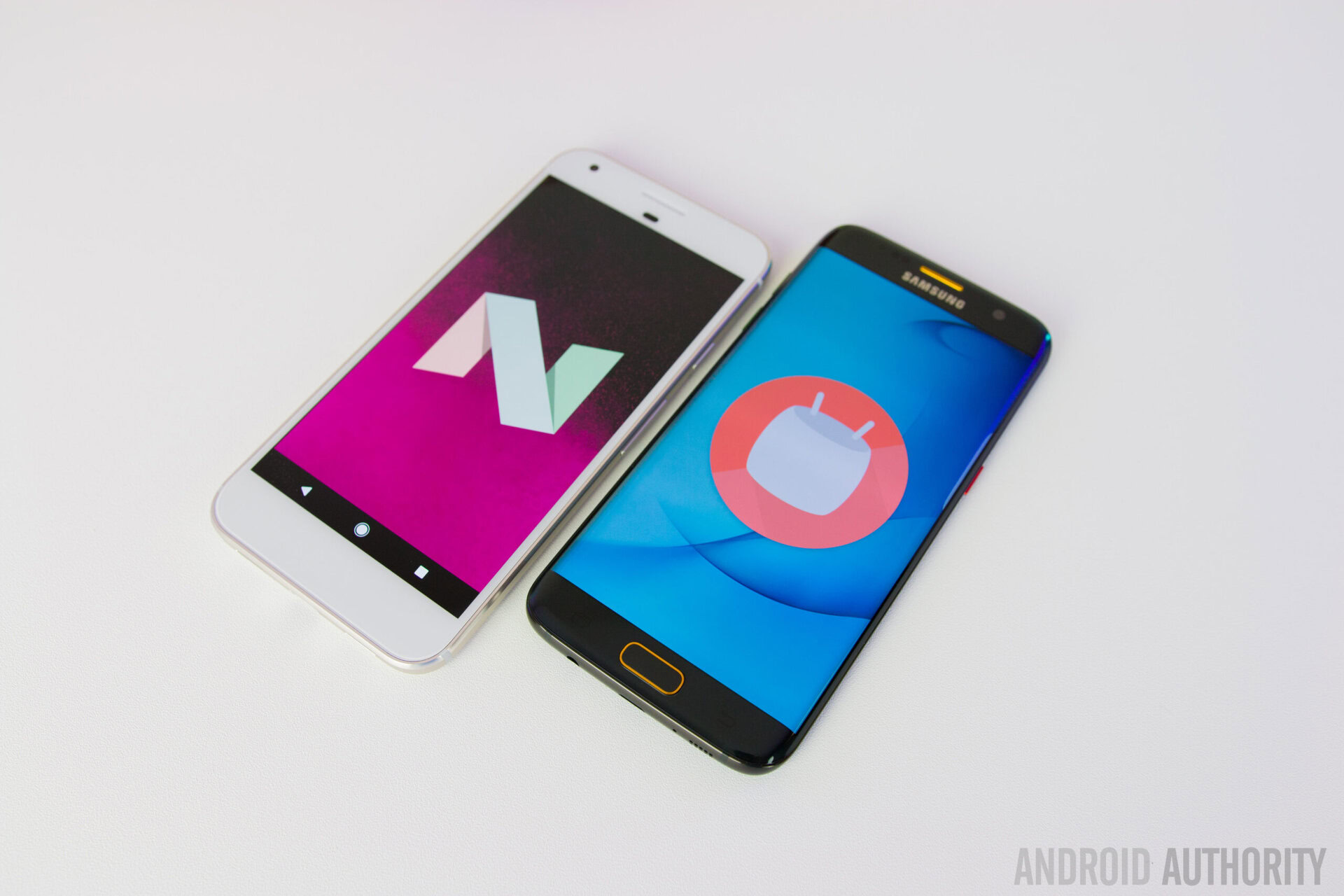
Under the hood, the Pixel XL comes with the latest Qualcomm Snapdragon 821 processor, backed by the Adreno 530 GPU and 4 GB of RAM. The performance of the Pixel XL is easily the best we’ve ever come across on an Android smartphone. It really goes to show what Google is capable of doing when they take control of both the hardware and software side of things.
Granted, the latest and greatest processing package and a pure stock Android iteration are huge contributing factors, but this phone rarely, if ever, skips a beat. The animations and transitions are consistently moving at a fluid 60 frames per second, and the touch response is also excellent, which makes the whole experience feels even more snappy.
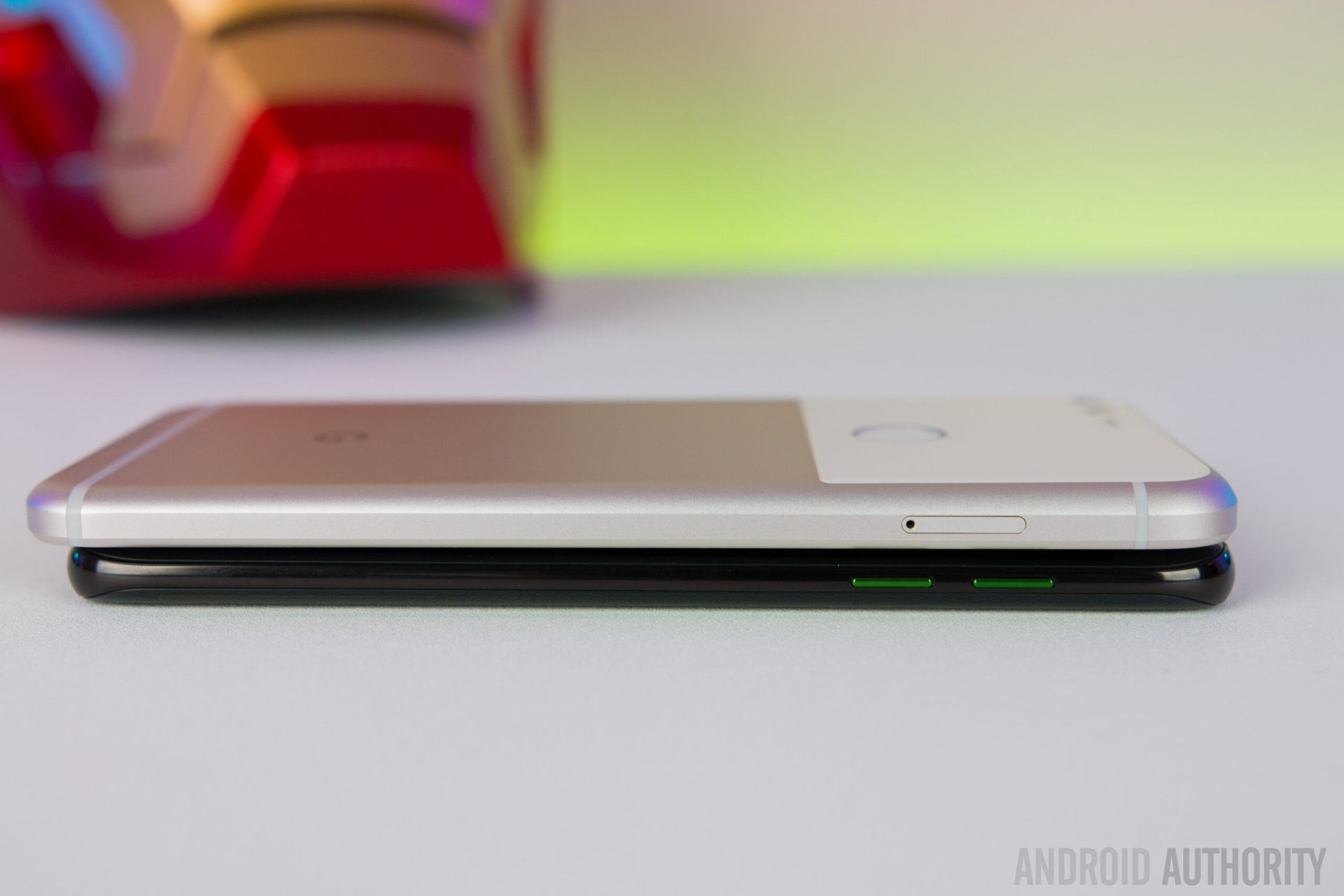
On the other hand, the Galaxy S7 Edge features the Qualcomm Snapdragon 820 processor that is also backed by the Adreno 530 GPU and 4 GB of RAM. As the numbering system suggests, the Snapdragon 821 isn’t a significant upgrade from the 820, and unsurprisingly, the performance is fantastic with the S7 Edge as well.
You will notice a few hiccups and frame drops more often than you would on the Pixel XL, but for the most part, it is still a very fast phone and has help up well since its release. Both devices come with native Vulkan support, which means that you are going to get much better graphics and gameplay with Vulkan supported games, which is a big plus for those who are mobile gamers.
Hardware
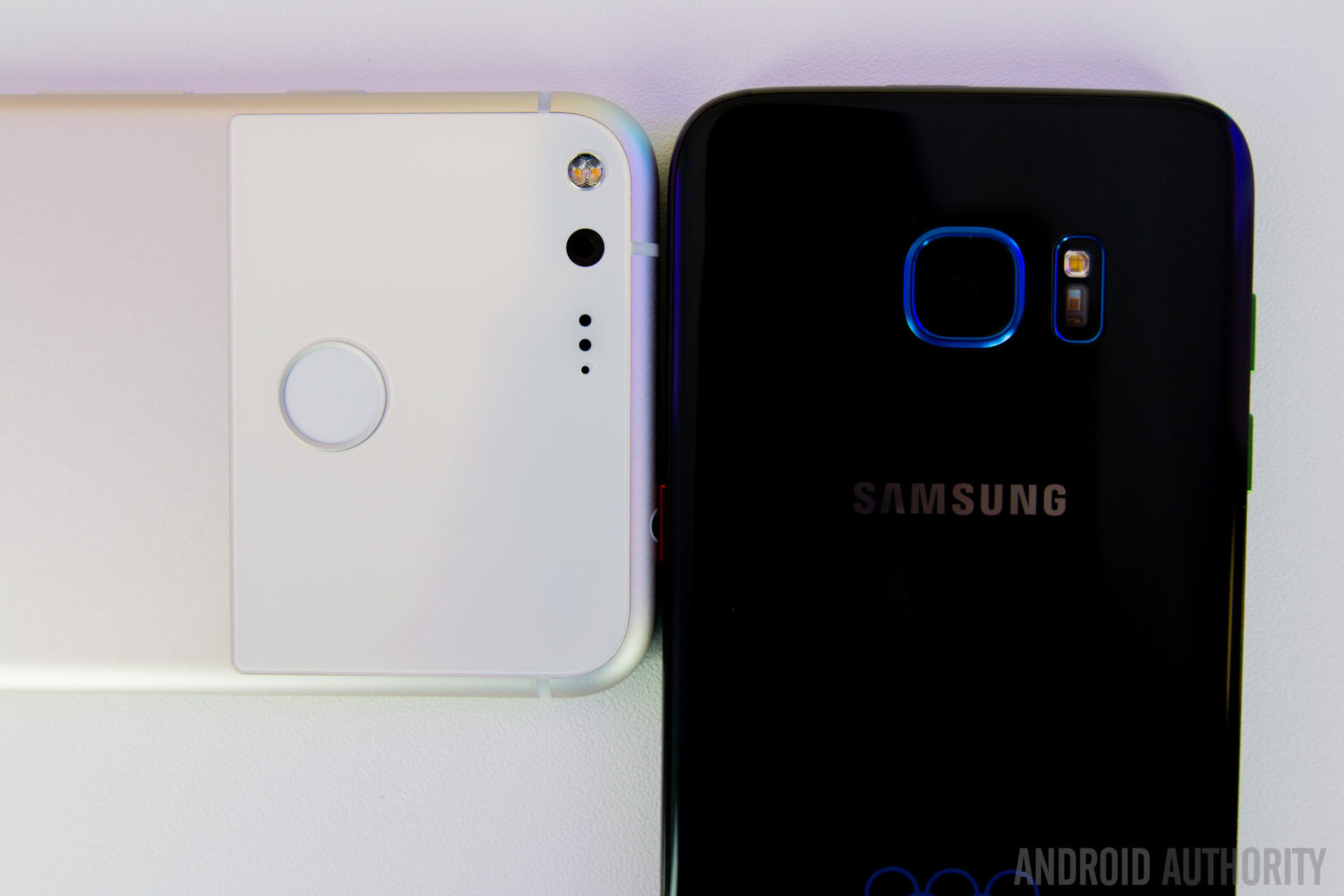
Both smartphones come with fingerprint scanners, placed on the back in the case of the Pixel XL, and embedded into the tactile home button up front in the case of the Galaxy S7 Edge. There are positives and negatives with either placement and it basically is a matter of personal preference. Both scanners are very fast and accurate, but I personally prefer the sensor of the Pixel XL, simply because it doesn’t require pressing down on a button to unlock the phone.
There are a few advantages the Samsung flagship over its Google counterpart, such as expandable storage. In the case of the Pixel XL, users will have to opt for the higher 128 GB storage option that requires quite a premium, or rely on the cloud to alleviate any storage concerns.
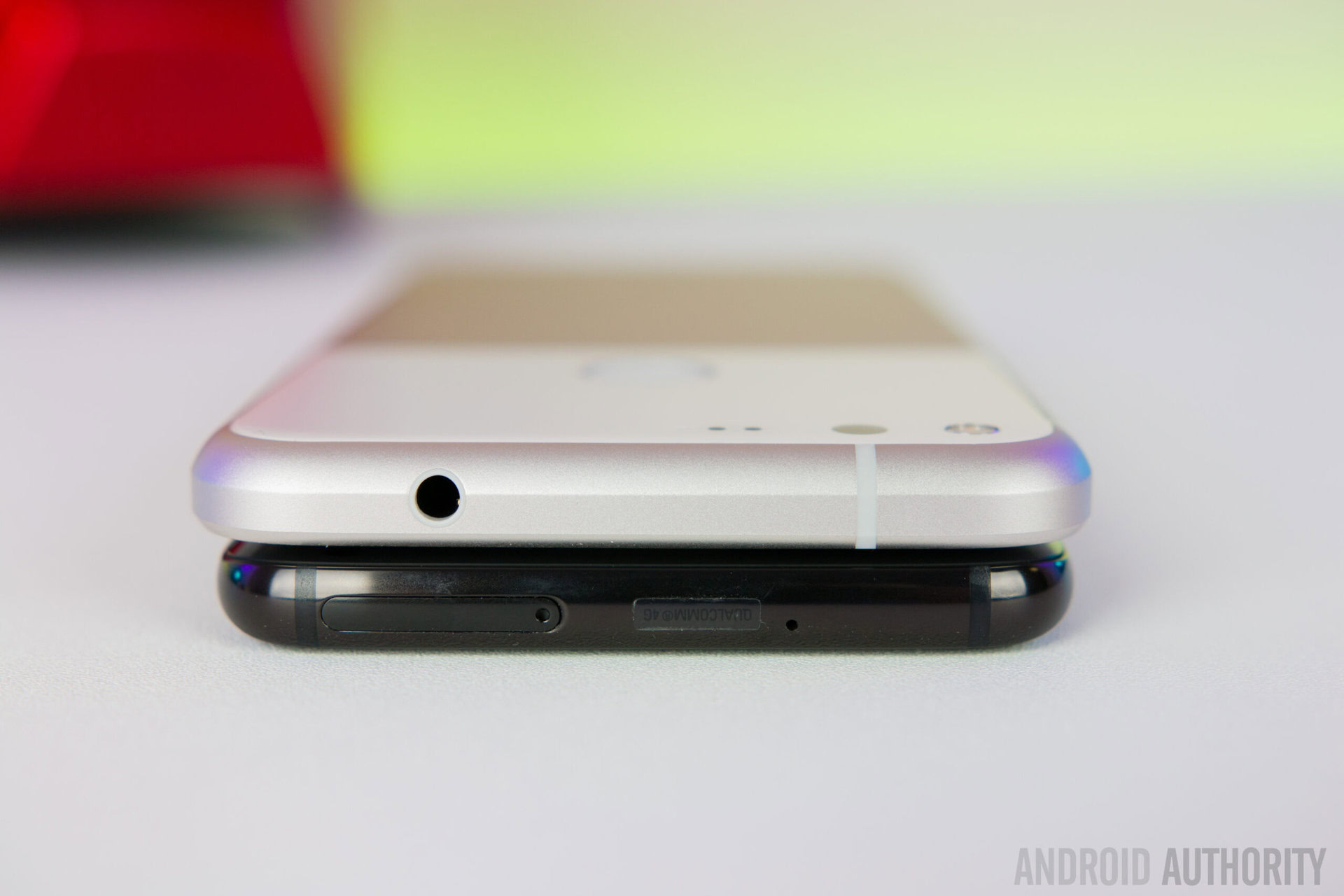
On the other hand, the Galaxy S7 Edge allows for expandable storage via microSD card for up to an additional 256 GB. The Galaxy S7 Edge also comes with an IP68 rating for dust and water resistance, which means that the phone will survive being completely submerged. The IP53 rating of the Pixel XL makes the device safe from a splash, but that’s just about it.
Another feature the Samsung flagship has is wireless charging, which is something that has been available with some Nexus smartphones, but is not included with the Pixel line. Some people may not miss these features, but if any of them are important to you, the Galaxy S7 Edge is going to be the better option.
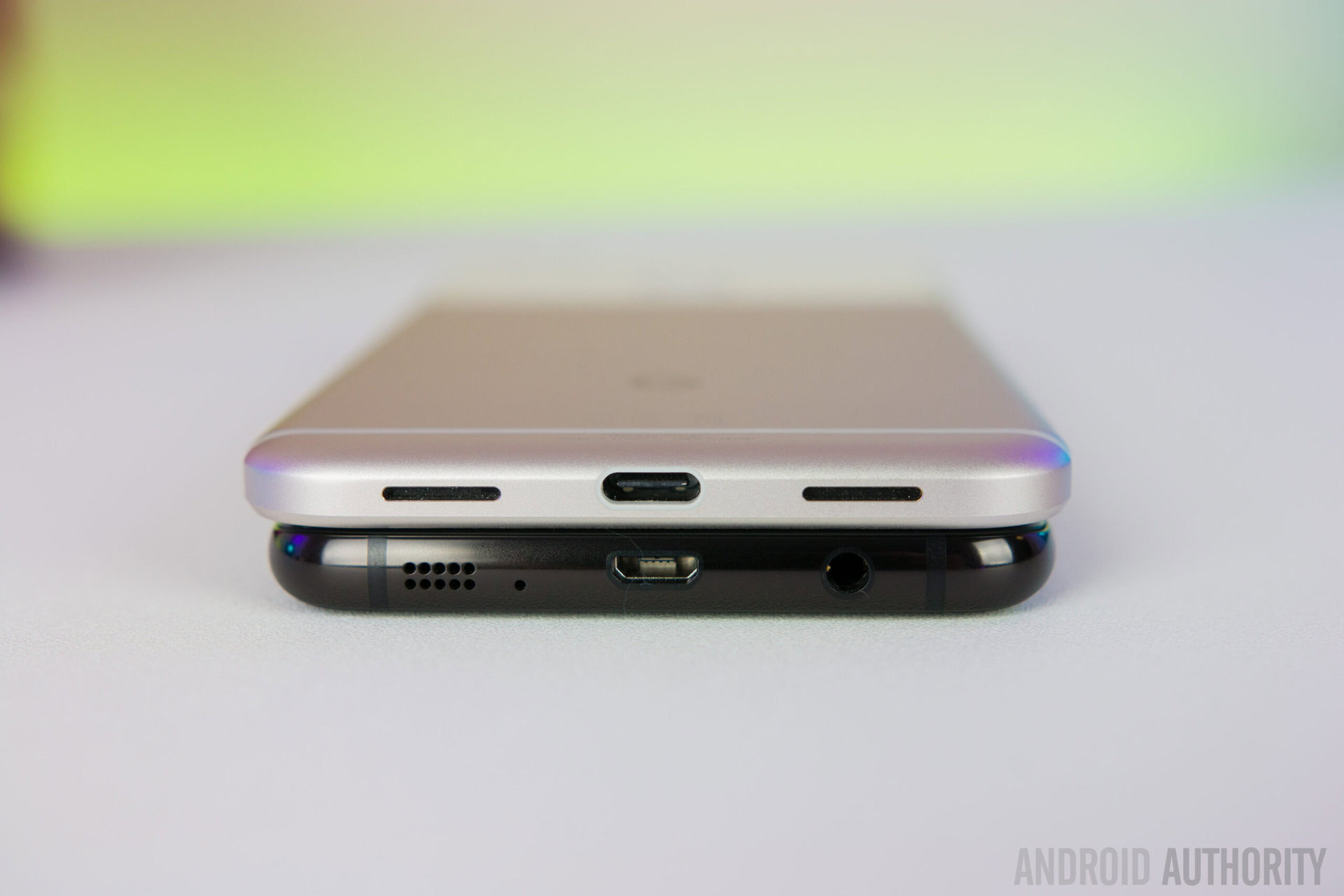
On the battery side of things, the Pixel XL and Galaxy S7 Edge come with 3,450 mAh and 3,600 mAh batteries respectively. If you are looking for a smartphone that can easily last all day, both these devices definitely fit the bill. My usage is quite heavy with a lot of gaming, streaming music, and watching videos on Youtube, and if these phones can last all day for me, there’s no doubt that battery life won’t be a complaint for most users.
Camera
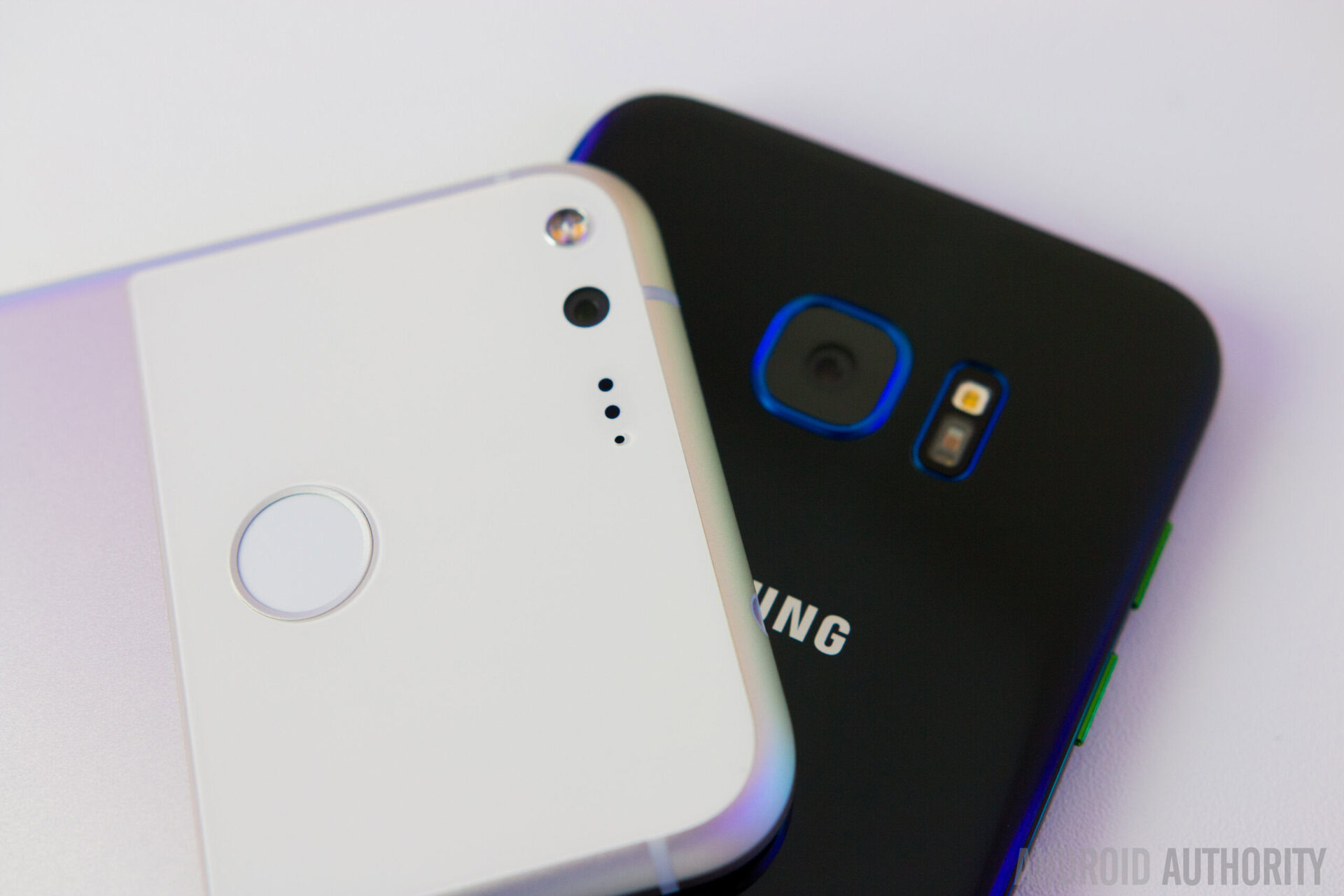
The Pixel XL features a 12.3 MP rear shooter with a f/2.0 aperture and electronic image stabilization, while the Galaxy S7 Edge comes with a 12 MP unit, with a f/1.7 aperture, optical image stabilization, and a very fast dual pixel auto focus technology. As far as features go, Samsung’s camera app offers a lot more controls and settings, while Google’s camera app is a lot more simplistic, and doesn’t include a lot of features or manual controls.
What really matters here is the camera performance, and picture quality is a complete toss up between the two. While the Pixel XL takes in the better shot in some instances, the Galaxy S7 Edge shines in other situations. One thing for certain is that if there were two cameras that deserve to be battling for the top spot in the camera department, it would be these two.
Pixel XL camera samples
Both cameras take excellent photos, with images having a lot of detail, sharpness, and vibrant colors. I would say that the Pixel XL is better in high contrast situations in terms of controlling highlights, but the Galaxy S7 Edge is much better in bringing out details in darker areas. Depending on what you’re looking for in these photos, you can easily go back and forth as to which camera takes better looking shots.
In low light conditions is where the differences between these two cameras become a little more obvious. The Pixel XL tends to blow out highlights more when compared to the Galaxy S7 Edge. Some of this does have to do with the “halo effect” that the Pixel phones have been suffering from, and will hopefully be fixed in a future software update.
Samsung Galaxy S7 Edge camera samples
You will also notice that the noise in the Pixel XL’s low light shots is much more prominent, which is because Google’s image processing doesn’t do a whole lot of noise reduction. The noise reduction is a lot more aggressive with the Galaxy S7 Edge, and while this does make the noise a lot less noticeable, it does cause the overall image to be much softer and with less detail. It boils down to your personal preference between more noticeable noise but with better detail and sharpness, or softer noise with less detail.
Software
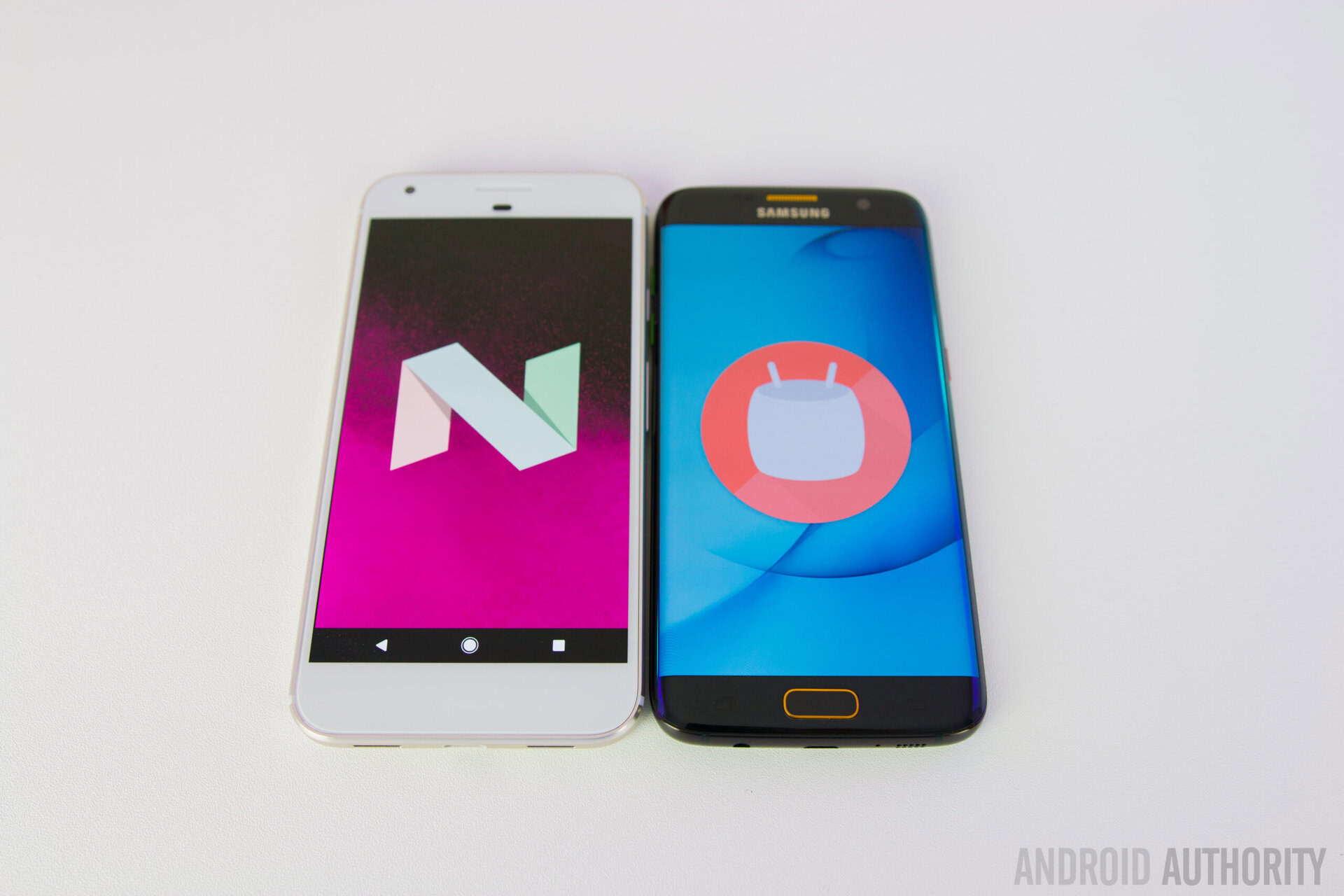
The biggest advantage that a Google made device has, and always will have, is in the software department. The Pixel XL is running Android 7.1 Nougat, which brings a lot of new enhancements, and you are also getting some exclusive Pixel phone features, like the Pixel Launcher and Google Assistant.
We’ve extensively covered the various new features of Nougat on Android Authority already, and the Pixel XL comes with all of them. These include revamped notifications, direct reply, multi-window support, and Doze on the go, and because this is Android 7.1, there are some additional features like the long press of apps to bring up a contextual menu and a reboot option.
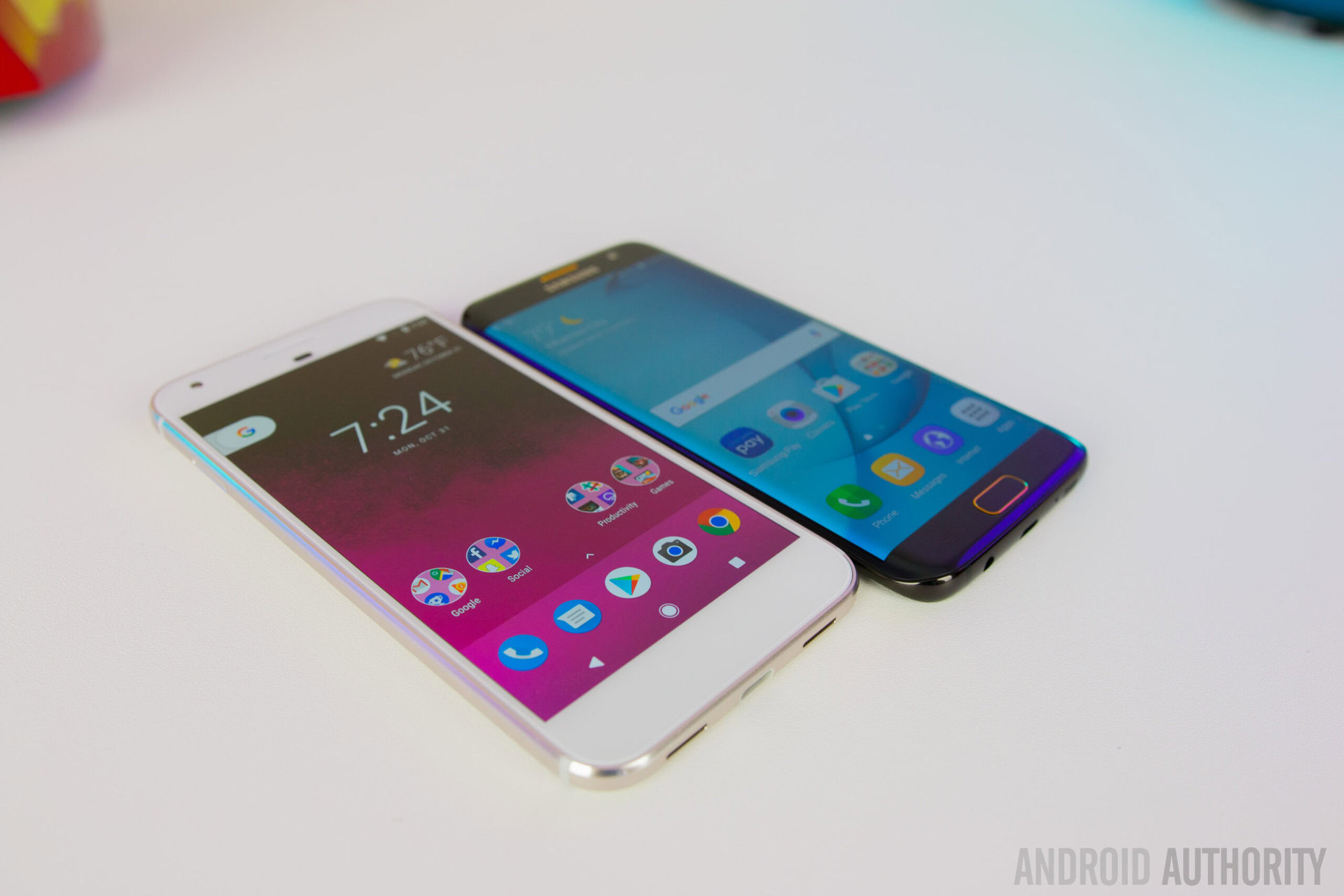
Samsung’s usual TouchWiz interface returns with the Samsung Galaxy S7 Edge, which is still currently running Android Marshmallow. It will definitely receive an official update to Android 7.0 Nougat, but it’s difficult to say when that will happen. However, you already get a lot of what Nougat brings to the table with TouchWiz, like editable quick toggles, multi-window support, a reboot option.
There are also a slew of other features that are specific to TouchWiz, like Samsung’s game launcher, and a large collection of customization themes. While Samsung’s take on Android is very different from stock, it is certainly not lacking in features, and with Samsung continuously refining and streamlining their user interface, it has only gotten better over the years.
Specs comparison
| Pixel XL | Samsung Galaxy S7 Edge | |
|---|---|---|
Display | Pixel XL 5.5-inch AMOLED display Quad HD resolution, 534 ppi | Samsung Galaxy S7 Edge 5.5-inch Super AMOLED display Quad HD resolution, 534 ppi |
Processor | Pixel XL 2.15 GHz Qualcomm Snapdragon 821 processor Adreno 530 GPU | Samsung Galaxy S7 Edge 2.15 GHz Qualcomm Snapdragon 820 processor Adreno 530 GPU |
RAM | Pixel XL 4 GB | Samsung Galaxy S7 Edge 4 GB |
Storage | Pixel XL 32/128 GB not expandable | Samsung Galaxy S7 Edge 32/64 GB expandable via microSD up to 256 GB |
Camera | Pixel XL 12.3 MP rear camera, f/2.0 aperture, EIS, dual LED flash 8 MP front-facing camera | Samsung Galaxy S7 Edge 12 MP rear camera, f/1.7 aperture, OIS, LED flash 5 MP front-facing camera |
Battery | Pixel XL 3,450 mAh | Samsung Galaxy S7 Edge 3,600 mAh |
Software | Pixel XL Android 7.1 Nougat | Samsung Galaxy S7 Edge Android 6.0 Marshmallow |
Dimensions | Pixel XL 154.7 x 75.7 x 8.5 mm 168 grams | Samsung Galaxy S7 Edge 150.9 x 72.6 x 7.7 mm 157 grams |
Gallery
Final thoughts
So, there you have it for this comprehensive look at the Google Pixel XL vs Samsung Galaxy S7 Edge! With regards to which smartphone is the better choice, I believe that the Galaxy S7 Edge is the more well-rounded device here. It has a more unique and distinguishable design, comes with additional hardware features like expandable storage, dust and water resistance, and wireless charging, and offers a software experience that has only improved over time.
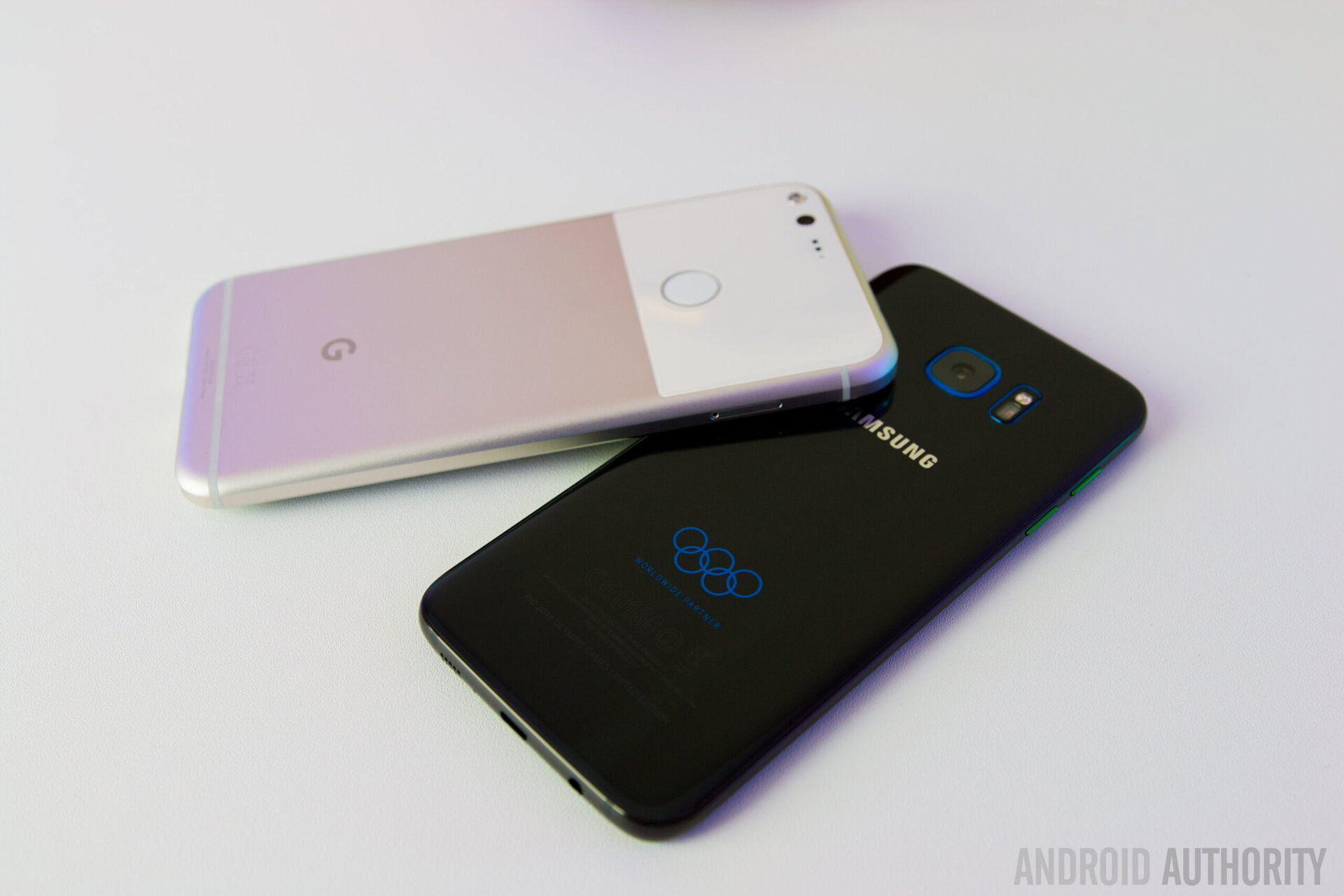
The biggest advantage you get with owning a Pixel smartphone is the guaranteed and timely software updates and a clean stock Android experience. The Pixel XL is a fantastic smartphone in its own right, but if Google had just added a few more key features, which would have also made justifying its price point a little easier, it would have really put this phone over the top.
[one_half]